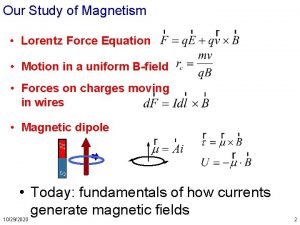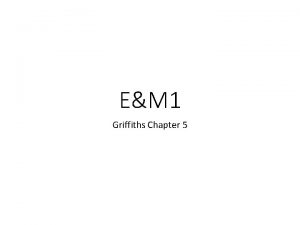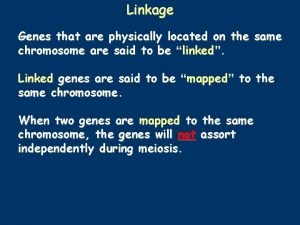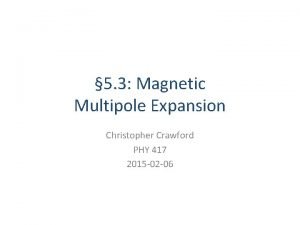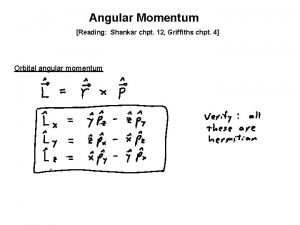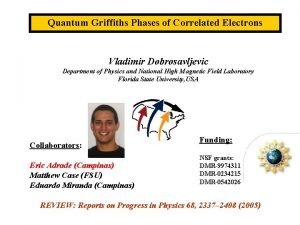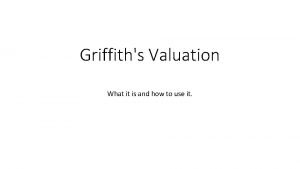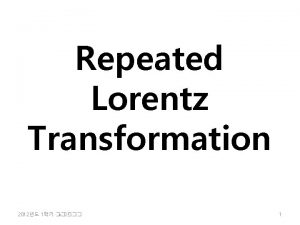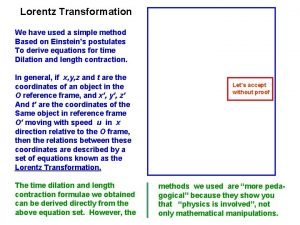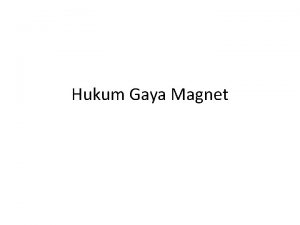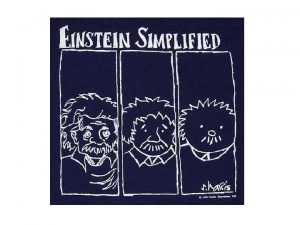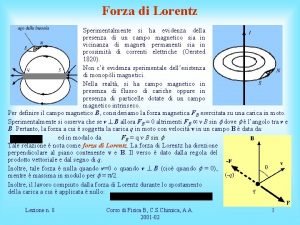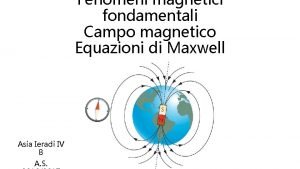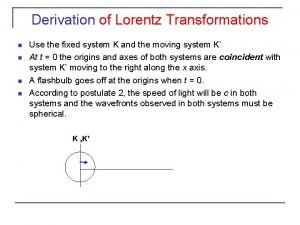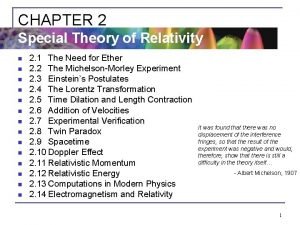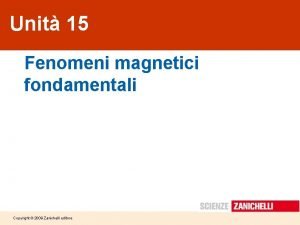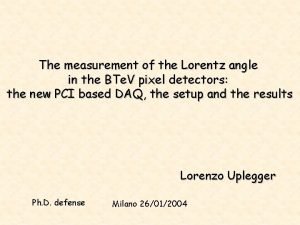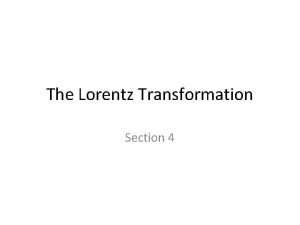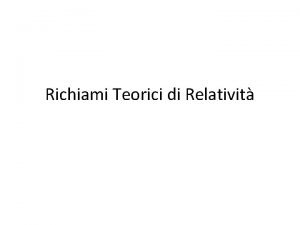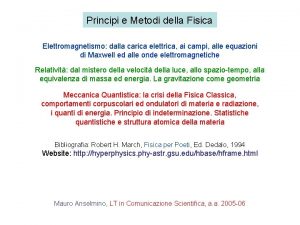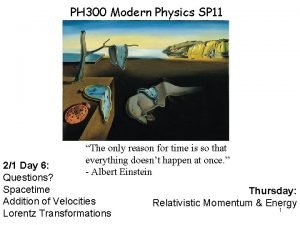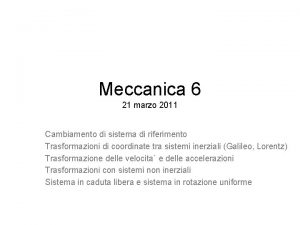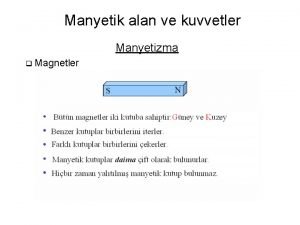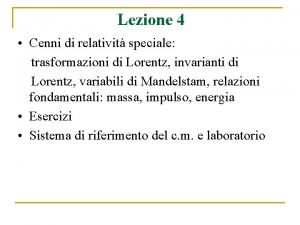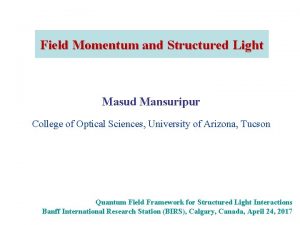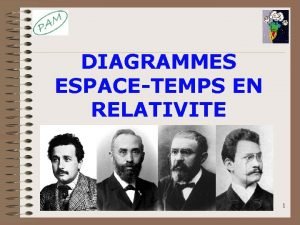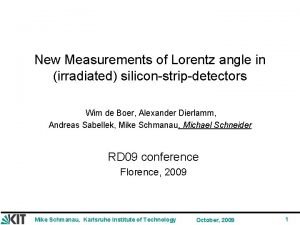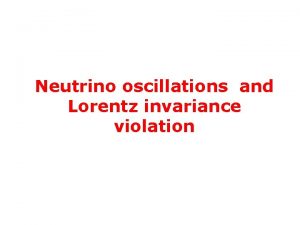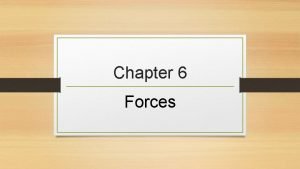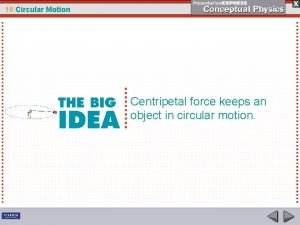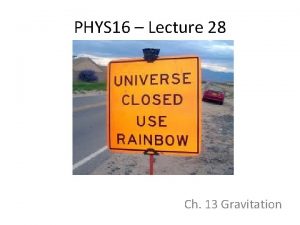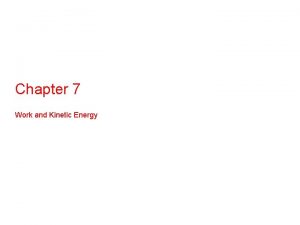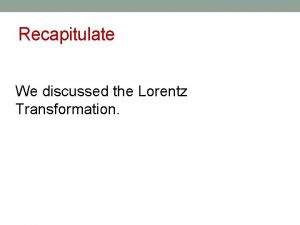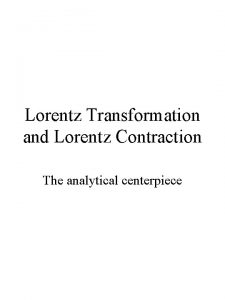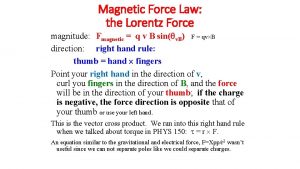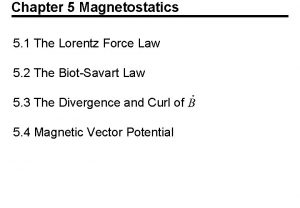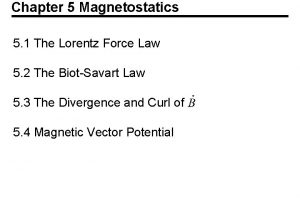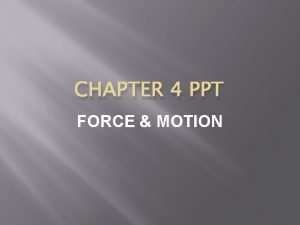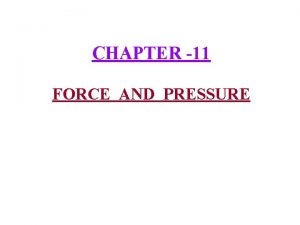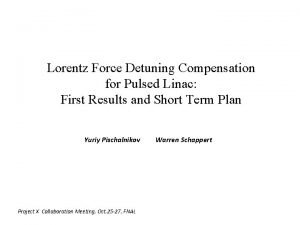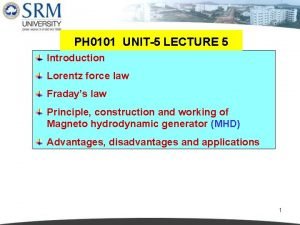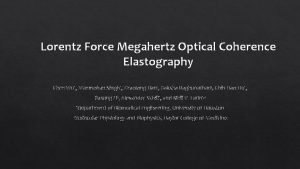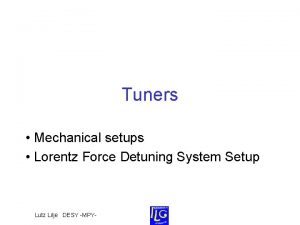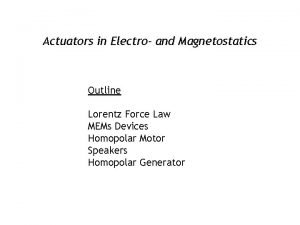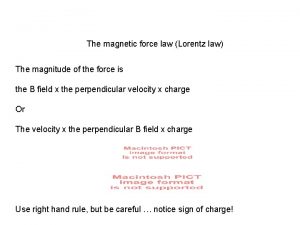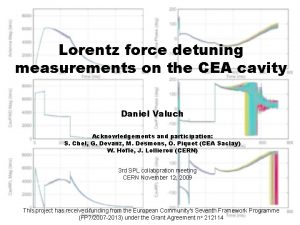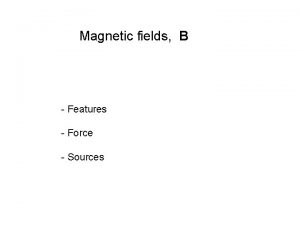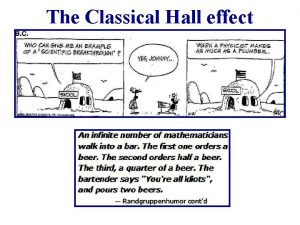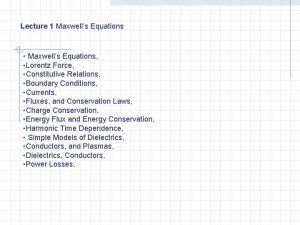EM 1 Griffiths Chapter 5 Lorentz force This























































- Slides: 55

E&M 1 Griffiths Chapter 5

Lorentz force This term defines E. There are electromagnetic forces that depend on the velocity of a charge in given fields, and these forces are perpendicular to v. This term defines a field “B”, which is the macroscopic magnetic field, or “Magnetic Induction”.

Cyclotron motion: charge moving in a magnetic field. Lorentz force provides centripetal force Momentum

Cycloid motion. Charge accelerated by an E-field in a perpendicular magnetic field.

y Equation of motion, Newton’s second law: =Q Define the “cyclotron frequency”: Take time derivative of the first equation and substitute into the second equation


Initial conditions

This is the equation of a circle with a moving center

No work is done by magnetic forces v Q dl = v dt =0

A current is a line of charge moving in a wire Charge per unit length = charge per second The magnetic force on the wire is the sum of the magnetic forces on all the elements of moving charge In the wire And I has the same magnitude at every point in the wire

Surface current density A ribbon of current flowing on a surface is like a wire of current Surface charge density The magnetic force on a surface current is found by summing the force on each ribbon of current

Volume current density The magnetic force on a volume current is found by adding the forces on the currents in all volume elements

The total current leaving a volume is By the divergence theorem By charge conservation = rate at which charge = the is lost from v due to outflowing current This is the continuity equation, a mathematical statement of charge conservation

Currents are the source of magnetic fields. If the currents are steady, we have magnetostatics. Thin wires are approximately line currents. Current is the same at every point in the wire Biot-Savart

Griffiths presents Biot-Savart as a fact, without derivation. Biot-Savart comes from time averaging the magnetic field in Maxwell’s equations for charges that perform a finite motion (as in a circuit). We don’t have Maxwell’s equations yet, so the logic of Griffith’s presentation is messed up.

Permeability of free space In the case of a steady surface current, Biot-Savart becomes In the case of a steady volume current, Biot-Savart becomes

Example: The long straight wire with constant current, B(r) is out of the page

If the wire is very long, and the field point is close: , and B = m 0 I/(2 p s)

What is the force between two parallel wires? The field at wire 2 from the current in wire 1. Into the page by RHR The force on wire 2 due to the field from wire 1 is The force per unit length is This line integral becomes very large for long wires Attractive for parallel currents Anti parallel currents repel

Magnetic field on the axis of a current loop The horizontal components cancel


The Biot-Savart law gives Ampere’s Law Currents are flowing in this region of space Take derivatives of B with respect to field point coordinates

Take divergence of B This is true for any possible distribution of currents

Take curl of B Product rule #8 These two terms are zero because J depends only on r’, not r.


Steady currents don’t build up charge density anywhere The integration volume contains all currents There are no currents on the boundary There Ampere’s law, differential form

Integrate Ampere’s law over any open surface Curl, or “Stokes”, Theorem Integral around perimeter of surface: The “Amperian Loop” Ampere’s law, integral form

Apply Ampere’s law to a straight line current We already derived this using Biot-Savart. Ampere’s law is easier.

Apply Ampere’s law to a sheet of current Divide the sheet into narrow wire-like strips. Vertical field compoents from neighboring strips cancel.

Apply Ampere’s law to the wires in a solenoid The horizontal B-field components from neighboring wires cancel. Net field inside is up. Net field outside is down. Field goes to zero at large distances.

Apply Ampere’s law to an infinite solenoid For the Amperian loop that encloses the wires The magnetic field outside an infinite solenoid is zero.

Apply Ampere’s law to a toroid. A toroid is a solenoid bent into a donut. The B-field outside is zero.

Basic equations of electro and magneto statics. These are special cases of Maxwell’s equations when nothing changes over time. Lorentz Force Law Fields go to zero at infinity

“Vector potential” Because we always have = 0, we can write Since For any vector A =0

In terms of the vector potential, Ampere’s law becomes Definition of A Second derivative rule #5

We can add the gradient of any scalar function l to A without changing B, because new old We can choose Then So that Remembering the solution to Poisson’s equation

With this choice of “gauge”, Ampere’s law simplifies to This is a Poisson’s equation for each component of the vector potential A We already know the solution from Chapter 2.

If the current is confined to a thin wire If the current is confined to a surface The vector potential tends to be in the same direction as the current, or at least in the direction of the part of the current closest to the field point.

The triangle of magneto statics

To solve the differential equations for B, we are going to need boundary conditions There are no magnetic charges Integrate both sides Divergence theorem The normal component of B is condintuous

Surface current creates a discontinuity in the tangential component of B

The boundary conditions on B can be combined into a single vector equation.













 Electrodynamics
Electrodynamics Magnetic force on wire formula
Magnetic force on wire formula Griffiths formula sheet
Griffiths formula sheet Electromagnetic force formula
Electromagnetic force formula Moulster and griffiths model
Moulster and griffiths model Griffiths mental development scales
Griffiths mental development scales Griffiths 2015
Griffiths 2015 Multipolar expansion
Multipolar expansion 10 examples of sentence stress
10 examples of sentence stress Lee griffiths messages
Lee griffiths messages Gerhard fehringer
Gerhard fehringer Commutation relation in quantum mechanics
Commutation relation in quantum mechanics Griffiths
Griffiths Elaine griffiths
Elaine griffiths Mood gym
Mood gym Griffiths valuation map
Griffiths valuation map Lorentz transformation matrix
Lorentz transformation matrix Psk lorentz
Psk lorentz Lorentz factor
Lorentz factor Pengertian gaya lorentz
Pengertian gaya lorentz Inverse lorentz transformation
Inverse lorentz transformation Gaya lorentz
Gaya lorentz Momento forza
Momento forza Forza di lorentz regola della mano destra
Forza di lorentz regola della mano destra Simplest derivation of lorentz transformation
Simplest derivation of lorentz transformation Lorentz transformation equation
Lorentz transformation equation Hc oersted
Hc oersted Lorentz angle
Lorentz angle Contoh soal transformasi galileo
Contoh soal transformasi galileo Lorentz
Lorentz Lorentz transzformáció
Lorentz transzformáció Fanny lorentz
Fanny lorentz Equazioni di lorentz
Equazioni di lorentz Kontraksi lorentz
Kontraksi lorentz Si vuole dilatare un intervallo temporale del 15
Si vuole dilatare un intervallo temporale del 15 Forza di lorentz
Forza di lorentz What i sp
What i sp Equazione di lorentz
Equazione di lorentz Manyetik alan kuvveti
Manyetik alan kuvveti Lorentz
Lorentz Trasformazioni lorentz
Trasformazioni lorentz Lorentz
Lorentz Diagramme de minkowski
Diagramme de minkowski Lorentz angle
Lorentz angle Gaya lorentz
Gaya lorentz Is tension force contact or noncontact
Is tension force contact or noncontact What force provides centripetal force
What force provides centripetal force Long range force vs contact force
Long range force vs contact force If you whirl a tin can on the end of a string
If you whirl a tin can on the end of a string Advantage
Advantage What is net force
What is net force Centripetal force vs centrifugal force geography
Centripetal force vs centrifugal force geography Air resistance contact or noncontact
Air resistance contact or noncontact Why electric force is conservative
Why electric force is conservative Centripetal force and gravitational force
Centripetal force and gravitational force Hooke's law vector form
Hooke's law vector form

